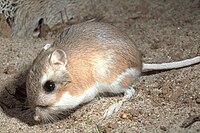
Photo from wikipedia
Abstract We investigated the plasma toxicokinetic behavior of free (parent) and total (parent and conjugated forms) of bisphenol S (BPS) and bisphenol AF (BPAF) in plasma of adult male rats… Click to show full abstract
Abstract We investigated the plasma toxicokinetic behavior of free (parent) and total (parent and conjugated forms) of bisphenol S (BPS) and bisphenol AF (BPAF) in plasma of adult male rats and mice following exposure via feed for 7 days to BPS (338, 1125, and 3375 ppm) or BPAF (338, 1125, and 3750 ppm). In rats, the exposure concentration-normalized maximum concentration [Cmax/D (ng/mL)/(ppm)] and area under the concentration time curve [AUC/D (h × ng/mL)/(ppm)] for free was higher for BPS (Cmax/D: 0.476–1.02; AUC/D: 3.58–8.26) than for BPAF (Cmax/D: 0.017–0.037; AUC/D:0.196–0.436). In mice, the difference in systemic exposure parameters between free BPS (Cmax/D: 0.376–0.459; AUC/D: 1.52–2.54) and free BPAF (Cmax/D: 0.111–0.165; AUC/D:0.846–1.09) was marginal. Elimination half-lives for free analytes (4.41–10.4 h) were comparable between species and analogues. When systemic exposure to free analyte was compared between species, in rats, BPS exposure was slightly higher but BPAF exposure was much lower than in mice. BPS and BPAF were highly conjugated; total BPS AUC values (rats ≥18-fold, mice ≥17-fold) and BPAF (rats ≥127-fold, mice ≥16-fold) were higher than corresponding free values. Data demonstrated that there are analogue and species differences in the kinetics of BPS and BPAF.
Journal Title: Xenobiotica
Year Published: 2020
Link to full text (if available)
Share on Social Media: Sign Up to like & get
recommendations!